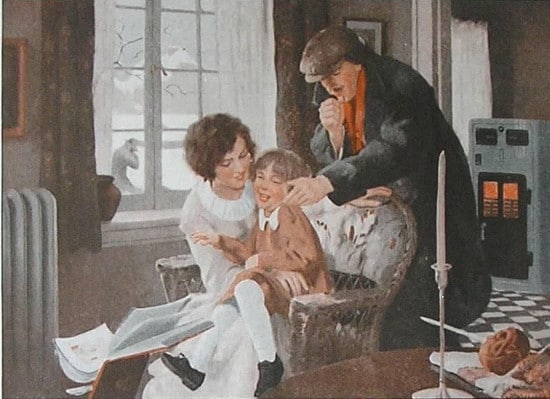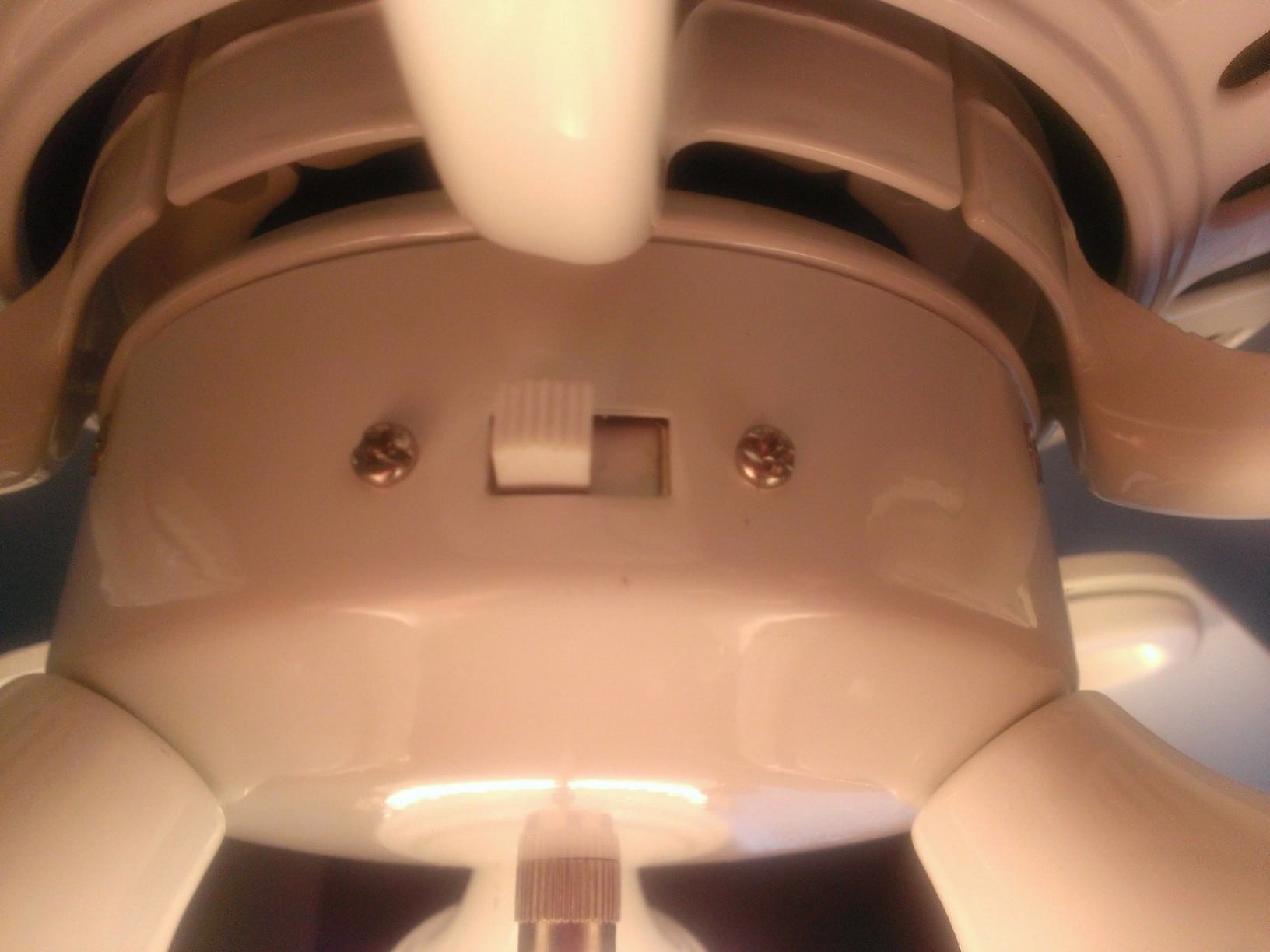
With winter fast approaching, many people — myself included — are thinking about ways to not only keep the house warm, but also save a few bucks while doing so. The projected tab for heating your home this winter (in places that need heating) is over $2,200. That’s not chump change.
Beyond just saving money, it’s simply not always easy to keep a home warm if it’s older and doesn’t have very good insulation. In our 1952 house, keeping the basement warm (where our entertainment center is located) is a tall task. Utilizing the tips below will not only save money, but will make sure you’re warm and comfortable all winter long.
1. Install a programmable thermostat. This will keep your bill low, and your efficiency high. Instead of having to manually fiddle with your thermostat every time you leave the house or every time you come back home, This Old House recommends programming your thermostat for the following temps/times during the week if your house is empty during the day (they also recommend setting the thermostat to 55 degrees when you go on vacation for a few days or more):
- 6 a.m. to 9 a.m. = 68 degrees
- 9 a.m. to 5:30 p.m. = 60 degrees
- 5:30 to 11 p.m. = 68 degrees
- 11 p.m. to 6 a.m. = 60 degrees
Their nighttime recommendation seems a little chilly, so adjust accordingly as to what’s comfortable for you. Keep in mind, though, that research has recently shown that cooler temps — say in the mid-60s vs upper-60s/low-70s — promote better sleep, and may even increase your metabolism.
2. Let sunlight in during the day. Once the sun is up, you want to capture as much of that free heat as possible. Even on cold days, the sun is still warm. So before you leave the house for the day, open up those curtains and let the light shine in. If there are certain parts of the house that don’t get sunlight, no need to open those curtains. Just do so where it streams in for a good part of the day.
3. Keep curtains closed at night. Once the sun goes down, keep all that heat from leaving through the windows by closing the drapes. If you’re in a particularly cold home or geographic area, consider getting insulated curtains for winter use. They’ll prevent some of the warmth in your home from escaping. You can even put up temporary curtains (or even sheets, rugs, etc.) over doors to the outside, even if just at night while you’re sleeping.
4. Mind your wood-burning fireplaces. While they’re romantic on a chilly evening, lighting a fire is terribly inefficient for the rest of your home. It’s warm and toasty right by the roaring flames, but for all that heat being exhausted up through the fireplace, cold air is being pulled into the house elsewhere (this is due to a physics principle called the stack effect – more on that below).
You don’t want to put the damper on idyllic evenings spent in front of crackling logs altogether, so when you do have a fire, just be sure to buy/use a glass front for your fireplace, which keeps some of that heated air in your home from escaping up the chimney once the flames have gone out.
Beyond that, remember to keep the flue closed when the fireplace isn’t in use. Failing to do so means basically having an open window in your room, letting warm air out and cold air in.

The “reverse” switch on a standard ceiling fan.
5. Take a look at your ceiling fans. If you have ceiling fans in your home, they may be sitting needlessly dormant during the winter months. Many fans have a “winter†setting, which reverses the fan so that it moves clockwise vs. counterclockwise. Since heat rises, the clockwise-spinning fan will push the heat back down into your rooms versus being trapped up at the ceilings. This is especially recommended if you have high or sloped ceilings. Some experts don’t trust the efficacy of doing this, as the fan may just cool the air too much, but try it out on a low speed, and see if it warms the room. In my experience from harsh Iowa winters, it definitely works.
6. Move furniture away from vents. You may have unknowingly placed furniture in front of heating vents when you moved in or rearranged. Go around the house and double check that vents aren’t blocked, and if they are, find a way to move your furniture, at least for the winter. This will make sure every room is getting its max heat potential. Blocking return vents in a forced-air central heating system could also cause air pressure issues, which further disrupts the flow of heat.
7. Mitigate the “stack effect.†The stack effect is the movement of air in and out of homes and other buildings, essentially creating large-scale chimneys. The rising warm air in a home will pull in cool air from the outside through any gap it can find. This creates negative pressure in lower levels, which acts like a suction cup because that warm escaping air needs to be replaced. This pulls cool air in and obviously chills the home. The effect is magnified in taller homes (more air rising to greater heights, so more cool air is being pulled in), so be extra aware of the stack effect if you live in a multiple-story home.
To combat this, you obviously want to seal those gaps. The most common offenders are doors and windows. To test this out, you can light a candle and carry it with you throughout the house, holding it close to the doors and windows. When you hold it still and it flickers, you have a possible gap. Hold your hand out to test it and you’ll often feel cold air. It may seem like a small and unimportant leak, but it can definitely make a big difference, especially when they’re multiplied around the house.
For doors, you can try making a “door snake.†That can be inconvenient, though, if the door is frequently used. You can also buy door sweeps that seal those gaps on the bottom. For gaps on the sides and top of the door, as well as window gaps, use weather stripping to negate the stack effect.
8. Seal other leaks, too. There can be air leaks in your home beyond windows and doors. Think attics, basements (where cements meets the wood frame), even kitchen hood vents. Take a look at this handy guide from energystar.gov to find those leaks and seal them. Hint: caulking can be your best friend.
9. Keep certain rooms toasty warm by closing doors. If you spend a lot of time in certain rooms, you can close doors and create a little sauna. I do this with my office, and it works like a charm. I simply leave the door closed at night, let the heat run like normal, and since there aren’t as many gaps for heat to escape, it’s nice and warm in the morning. At times, it even gets too warm. If you have big, open spaces, you can use room dividers; it may not seem like much, but any blockage that keeps air from escaping just a little less quickly will help keep things warmer.
You can also close doors to rooms that aren’t frequently used in your home — just make sure you also close the vents in those rooms. This sort of acts to lower the heated square footage, and the warm air will spread quicker and easier through the house. As a bonus, this will save a little bit on your heating bill, too. (Just make sure you aren’t sticking your in-laws in the guest bedroom without first letting it heat back up for a day or two.)
10. Utilize space heaters, but with caution. Space heaters are excellent tools for keeping individual rooms warm. The danger is that they are a high-risk fire hazard, especially compared to other tips listed here. In fact, they account for one-third of all heating-related house fires.
To ensure the safety of your household, keep any flammable material at least three feet away, and make sure the heater is on an even and stable surface. Never leave space heaters on overnight or when you leave the home (there are timed space heaters that turn off after 1-4 hours that are a better option than entirely manually-operated ones). Additionally, it’s a good idea to only use space heaters that shut off automatically when tipped over.
11. Use the oven. Baking, convecting, and broiling things will keep your house warmer, especially in rooms nearest the kitchen. Don’t be afraid to roast a chicken or bake a ton of casseroles when the temperatures dip! (This is also why, in our household, we don’t use the oven much in the summer.)
12. Add layers to your wood floors. According to the National Energy Foundation, uninsulated wood floors can account for up to 10% of a home’s heat loss. Carpets and rugs were created for a reason — to keep rooms warmer. They’re far better at trapping heat than your creaky wood floors. Add a rug or roll of carpet to your floor in the winter, and you’ll notice a difference in coziness.
13. If you have radiators… The first thing you can do is put tinfoil on the back of the radiator. This will reflect heat back into the room(s) versus it just floating up to the ceiling. There is special reflective radiator foil, but the kitchen variety will work as well. The second thing you can do is put up a shelf or table over the radiator (not on the radiator — don’t put anything directly on it). Again, this acts to trap the heat and let it spread more evenly through the room.
Ultimately, keep the person warm versus the house. In doing research for this article, I came across one mantra over and over and over again: it’s more about keeping the person warm versus the entirety of the house. The house doesn’t really care if it’s a little chilly, but you care if you’re cold. So throw on hoodies and sweaters, get a warm robe, sip on hot coffee or tea all day, break out the thick blankets and bed sheets; do whatever you need to do to stay warm and comfortable (being comfortable is key — you don’t want the thermostat so low that you have to wear a coat in your own home). In all likelihood, you can probably handle the thermostat being a couple degrees lower if you take some of the measures above.
What tricks do you have for keeping your place warm in the winter?


